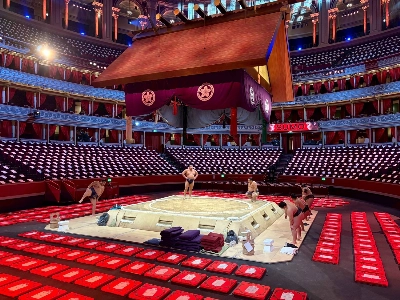On the cover of the catalog for an exhibition now at the National Museum of Modern Art in Tokyo is -- ready for this? -- a shoyusashi (soy-sauce bottle). I find that quite odd, as the museum houses the hallowed arts of painting, sculpture and the like. A shoyusashi? Come on now, it just doesn't seem to fit into the same fine-arts league as, say, the Taro Okamoto painting in an adjoining room.
Yet as I delved deeper into the smooth elegant lines of the porcelain piece, and its history, I found myself nodding in approval at its refined, functional, industrial-art sensibilities.
Though the name of its creator, Masahiro Mori, is unfamiliar to many, his designs are known the world over, the shoyusashi being a prime example. His industrial designs of everyday eating utensils added a lively touch to so many Showa Era bourgeois tables. Even more significant, he was one of the first in the world of Japanese ceramics to recognize that artistic form could be wedded to mass production. In other words, Mori brought the aesthetic sensibility of the artist into the ordinary Japanese home.

















With your current subscription plan you can comment on stories. However, before writing your first comment, please create a display name in the Profile section of your subscriber account page.